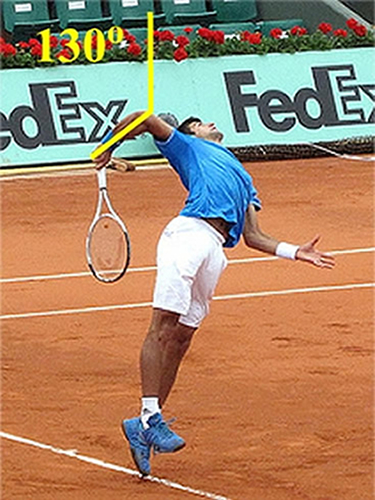I have never asked but would be surprised if the number was that high. Given that the two motions are very similar, I would expect the vast majority (90%+) to use the
same arm for both tasks. At rec level baseball/softball virtually everyone I see uses the same arm for batting/throwing. Note:Higher level baseball players will sometimes learn to bat with opposite arm to gain an advantage.
OTOH, if the number is that high, it means you have players like yourself, who have achieved a 5.0+ serve, but unable to throw well. It suggests that rec players that cannot throw well might achieve a much better serve if we understand what is going on, i.e. discover the racket throw is different than a ball throw.
So far in this thread, I don't believe anyone has offered an explanation to your type of case, other than to dismiss it and say it is just mental. But there likely is something else going on.
Start talking to lefty tennis players. You may be surprised at what they tell you. Almost all will be mixed-handed and perform some tasks right handed. With a large enough sample, I'd be surprised if you didn't find that at least 1 in 3 of these lefty tennis players didn't happen to throw right-handed. Check out the link above that discuss handedness.
You might be correct about rec baseball players. Lefty-ness in baseball seems to be more prevalent at the pro level. When I played baseball, as a youth, I also batted right-handed. I had tried some left handed batting. It was somewhat better than my left-handed throwing but it still not feel as natural as my right-handed batting. Not sure what to make of all this.
Now, while tennis serving and overhand ball throwing look very similar, they actually
feel different to me. I would think that the differences are primarily due to the extra length and much higher MOI (moment of inertia). A football has a comparable mass (slightly heavier?) to a tennis racket but would have a much lower MOI (or swingweight). It does not have the extra length associated with a tennis racket.
The racket essentially adds another 2 feet of length to your arm. It changes the last links (in the KC) -- forearm, wrist, hand -- considerably. This added length and high MOI (SW) would have to have an effect on feel and on stroke or throwing mechanics.
Perhaps, if my left arm was 2 feet longer, I would throw much better with that arm.
In a previous post in this thread, I had mentioned some differences between a ball throwing motion and a tennis serve. Consider how a baseball pitcher achieves their high degree of ESR prior to the forward motion of the throwing hand (relative to the body) ...
Lincecum is exhibiting a very significant amount of
ESR in this image. He achieves this ESR by uncoiling the torso and by leaving the ball and his right hand behind him as his body takes a very
long stride forward. Note the pitching rubber at the right hand edge of the image -- that is where he started his pitching motion (prior to the stride). Of course not all ball throwing motions require a forward stride of this magnitude -- but it is doubtful that they will get this much ESR either.
Nevertheless, it is a forward motion of the body, along with an uncoil, that facilitates an ESR with other ball throws. On a very short pass, a football QB dos not need very much coil/uncoil or very much of a forward stride. However, on long passes, we do see more coil/uncoil and a forward stride.
For good tennis serves, we will actually see more body/torso coiling that we typically see for ball throwing. However, we do not see much of a forward stride to facilitate ESR. A long stride is not allowed for a serve. For a tennis serve we see ESR facilitated by upward/vertical movement much more so than a forward/horizontal motion. Upward leg drive is a large part of this. The length of the racket, with a mass further away from the hand also helps to achieve this ESR and a good racket head drop. This is one of several reasons that a serve or racket throw feels different from a ball throw.
Much easier to achieve a racket head drop such as this with an upward racket throw than with a ball throw. The racket head moving thru a
loop behind the body produces different forces on the arm, shoulder and body than a ball throw does. It produces a very different feel as well. The weight of the racket head and the higher swingweight (of the racket vs the ball) will facilitate ESR. Gravity acting on the racket head as it drops produces a different feel and a different requirement for the tennis serve.
(Will talk about other differences in throwing mechanics in my next post).






